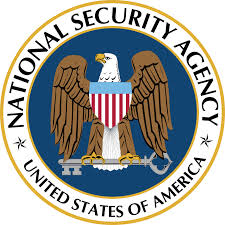What is the national security agency? The cryptological organization of the United States is responsible for coordinating and directing highly specialized activities to ensure the protection of the information systems of the United States. They are also responsible for producing foreign intelligence information.
National security agency history
By order of President Harry Truman the National Security Agency was established on November 4, 1952. The decision to have this agency complete was finalized after the nation broke German and Japanese codes during World War2. This contributed to allied success against the German U-Boat threat in the Atlantic and the victory at the battle of midway in the pacific. It also contributed too to many other successes of this kind. The decision that President Truman made to establish the NSA was followed by several studies about how you can use the same methods to continue to do code breaking work even after the war.
The Central Security Service
The central security systems were established by Presidential directive in 1972. It comprises of the armed forces. This includes:
- The U.S Army
- The Navy
- The Air Force
- The Marine Corps
- The Coast Guards
They perform code making and code breaking work along with the US National Security Agency. There is a unified cryptologic effort present between the NSA and the CSS since the Director of the NSA is also the chief of the CSS. These two agencies work together to maintain efficiency at different locations around the world and to support the following:
- Leaders
- Policymakers
- Decision makers
- The military
- Civilians
- from white house and to the troops that are in the front lines.
Purpose and responsibility of the NSA/CSS
The National Security Agency and the Central security service has two missions that are interconnected. They are known as SIGINT which is short for signals intelligence and information assurance. Through SIGINT the NSA gathers information that America’s adversaries desire to keep secret. The NSA uses information assurance to protect vital national security information as well as important systems from theft or damage by others. Together, both missions of the NSA and CSS have a third essential function. This is enabling network welfare and military operation. Through the carrying out of these missions the NSA and CSS are able to save the lives of innocent people, defend vital network and advance the goals and alliances of the nation. They are successful at doing this while strictly protecting privacy rights as guaranteed by the constitution and laws of the United States.
Signals intelligence as it relates to us agencies
Signals intelligence collects foreign information from communications and information systems. They then provide this information to their customers across the United States government. This includes senior civilian and military officials. This information is then used to:
- protect the troops
- support the allies of the United States
- fight terrorism
- combat international crime and narcotics
- support diplomatic negotiations
- advance other national objectives
SIGINT id collected from various sources. They include foreign communications, electronic systems and radar. The information that is collected is normally in foreign language and dialects. It is protected by codes and other security measures and involves complex technical characteristics. When this information is collected the next step is for the NSA to decode the information and send out to the various authorities so that the necessary steps are taken regarding what they find out. The employees at the NSA are quite skilled in the technical fields as decoding such information takes quite a skilled team. They are also experienced in the development of state-of the art equipment that are needed to make their job easier. The researchers at the agency work constantly to help the NSA anticipate and prepare for any future developments.
Information Assurance and the national security agencies
The purpose of information assurance is to prevent access to sensitive information or classified national security information and systems. The purpose of this is to ensure that others may not have access to this information to steal it or tamper with the national security systems and information. This work keeps important information out of unauthorized hands and helps to ensure that the information that is needed by the decision makers is readily available when they request it.
The United States Intelligence Community
This refers to an organization of executive branch agencies that work both together and separately to carry out intelligence activities. These are necessary for conducting foreign relations and for protecting the national security of the United States. Members of the United States intelligence includes:
- central intelligence agency
- defense intelligence agency
- department of energy
- department of homeland security
- department of state (bureau of intelligence and research)
- department of treasury (office of intelligence and analysis)
- Drug Enforcement Administration (Office of National Security Intelligence)
- Federal Bureau of Investigation (National Security Branch)
- National Geospatial-Intelligence Agency
- National Reconnaissance Office
- National Security Agency/Central Security Service
- specified elements of the United States Air Force
- United States Army
- United States Coast Guard
- United States Marine Corps and the United States Navy
The next time that you are unsure or someone asks the question, “What is the national security agency?” you will be able to tell them with confidence.
